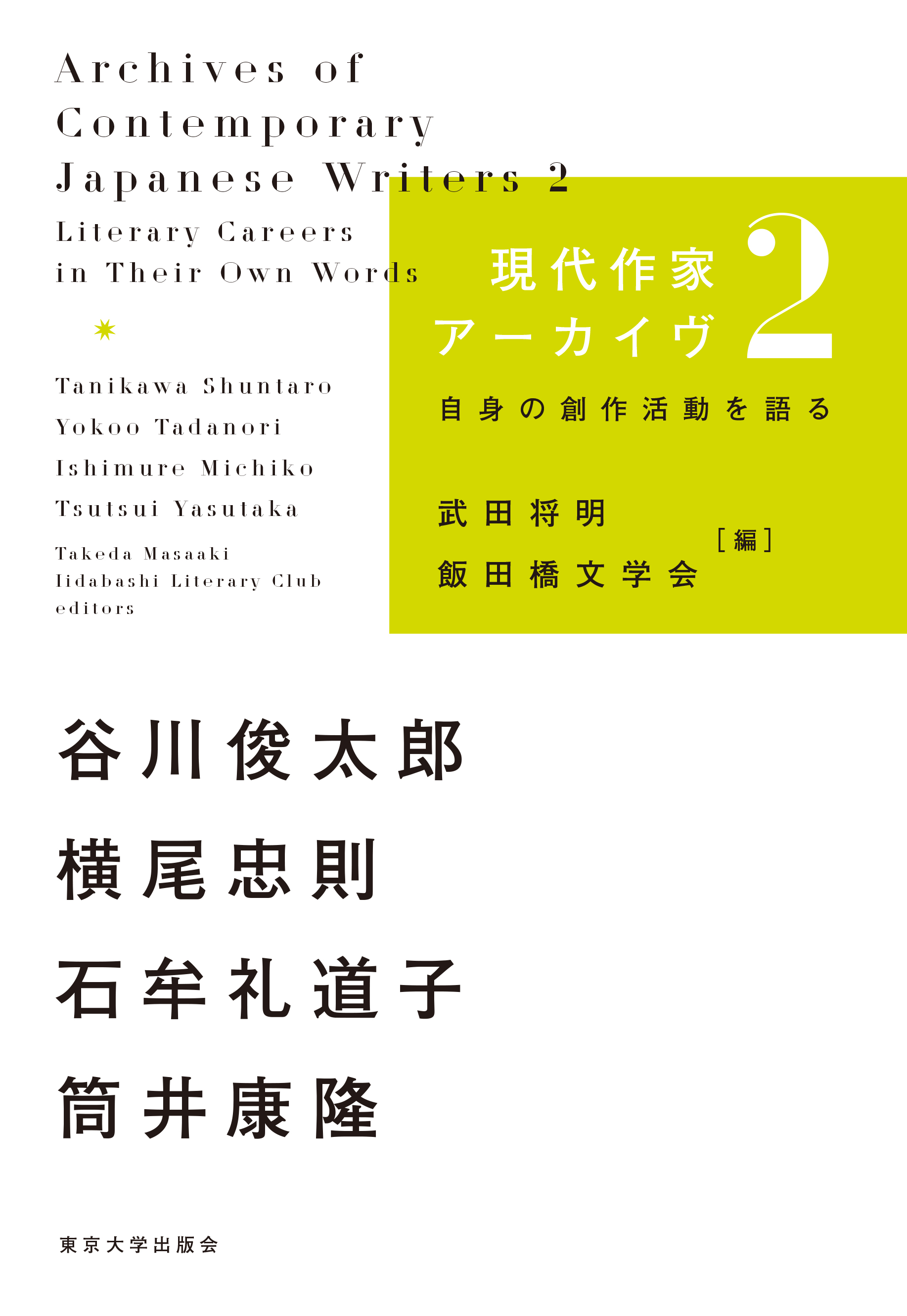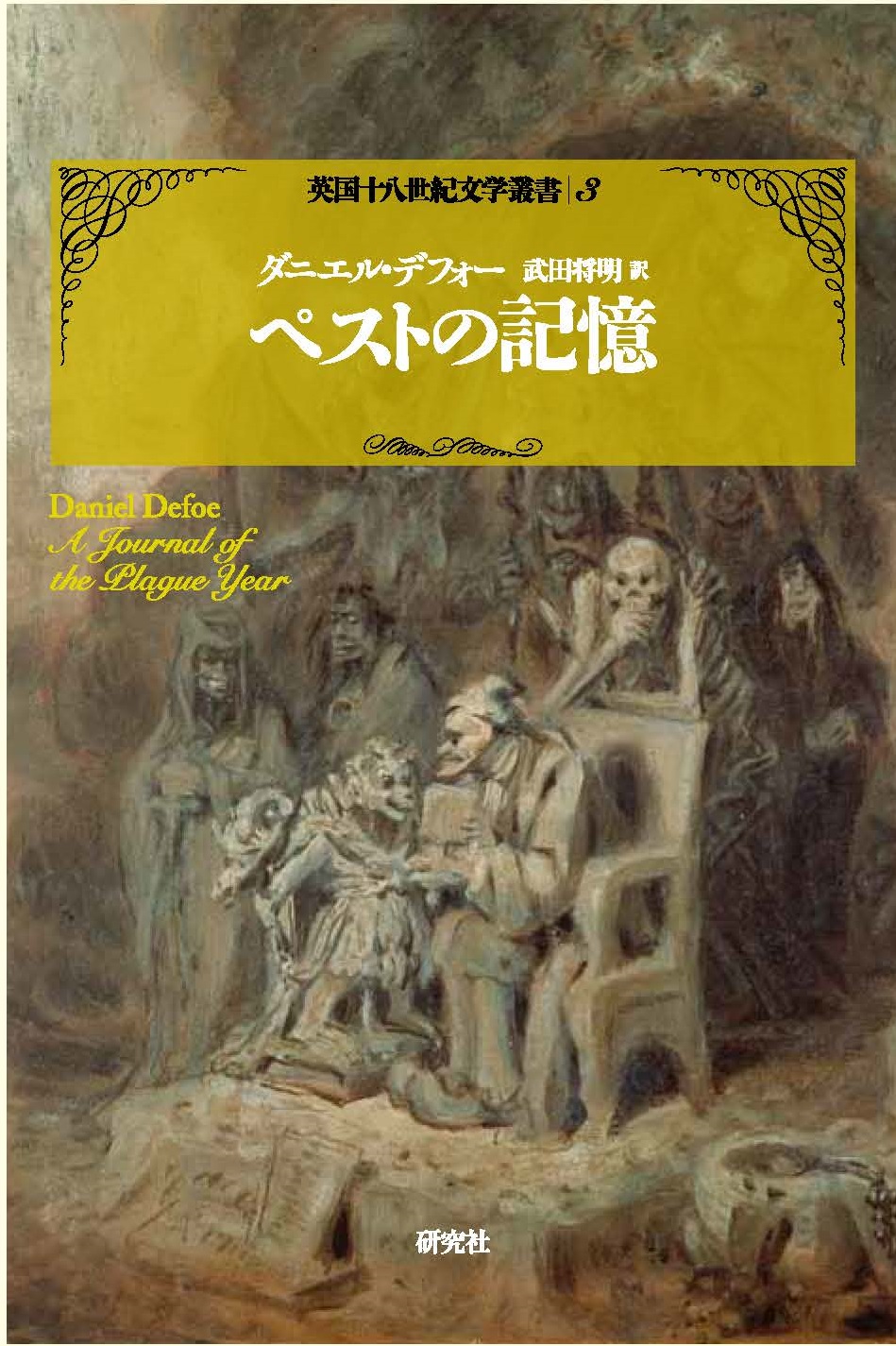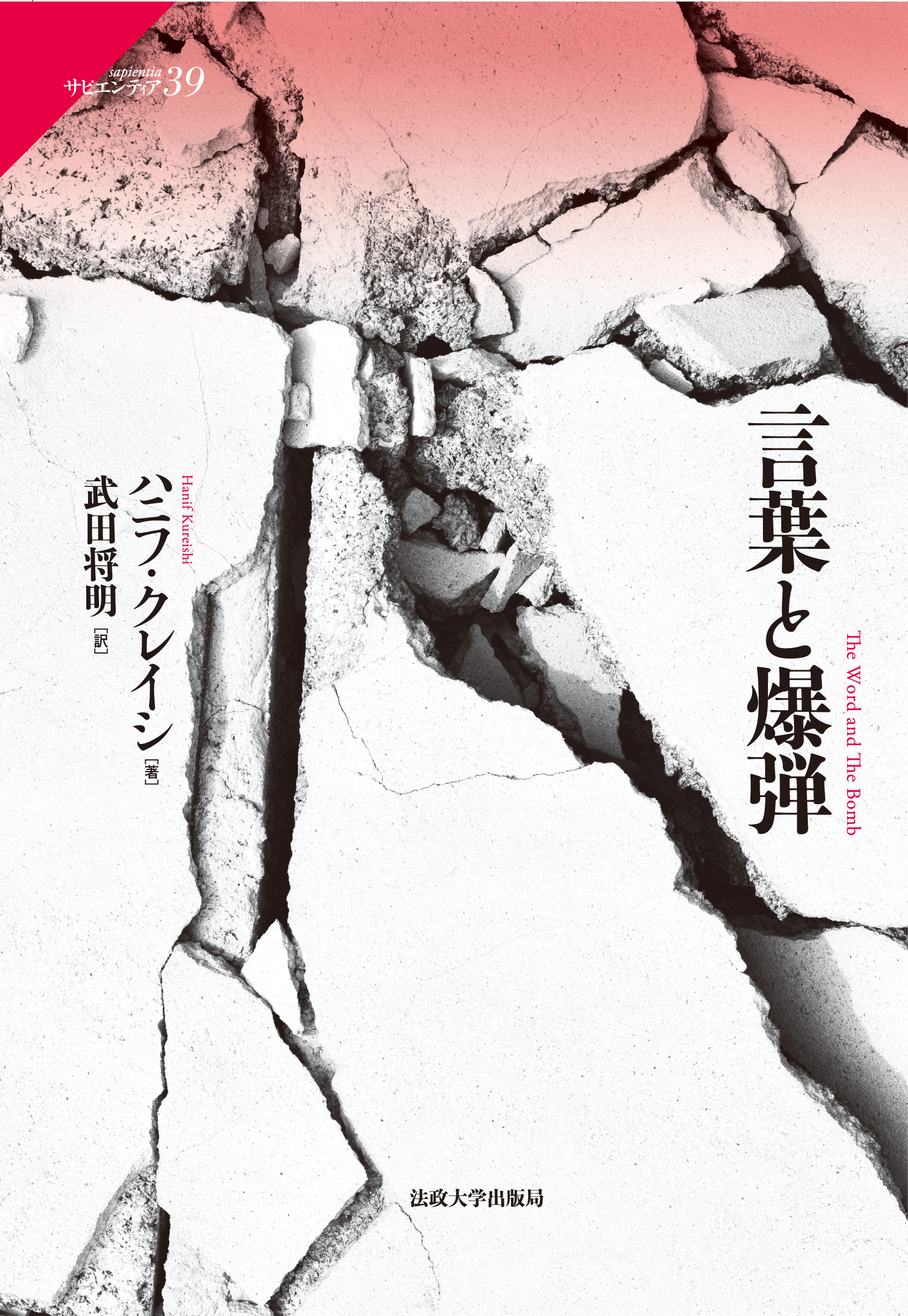
Title
Gendai-Sakka Archive 2 (Archives of Contemporary Japanese Writers 2 - Literary Careers in Their Own Words)
Size
256 pages, 127x188mm
Language
Japanese
Released
December 12, 2017
ISBN
978-4-13-083072-0
Published by
University of Tokyo Press
Book Info
See Book Availability at Library
Japanese Page
The Archives of Contemporary Japanese Writers is a project that has materialized through the collaboration between the Iidabashi Literary Club, a group of literary professionals led by author Keiichirō HIRANO, and various institutions from the University of Tokyo (University of Tokyo Library, UTCP, Humanities Center). The project objective is to conduct interviews with active Japanese writers about their careers and to create an archive of the interviews.
As of January 2021, 21 writers have presented their career stories. The interview process began with Gen'ichirō TAKAHASHI on February 18, 2015, and proceeded to include Yoshikichi FURUI, Jakucho SETOUCHI, Shuntarō TANIKAWA, Tadanori YOKOO (best known as a visual artist, but also a writer), Michiko ISHIMURE, Yasutaka TSUTSUI, Masahiko SHIMADA, Kyōko HAYASHI, Senji KUROI, Teru MIYAMOTO, Yōko OGAWA, Rieko MATSUURA, Hikaru OKUIZUMI, Toshiyuki HORIE, Kiyoko MURATA, Mutsuo TAKAHASHI, Oriza HIRATA, Natsuki IKEZAWA, Banana YOSHIMOTO, and finally, on October 24, 2019, Hoesung LEE. This collection of writers has provided invaluable stories representing a range of styles, areas of interest, and generations.
These interviews are generally open to the public (though private interviews were arranged for ISHIMURE, HAYASHI, and MIYAMOTO for their convenience), and the University of Tokyo Hongō campus or Komaba campus serves as the venue (for some, such as SETOUCHI and MURATA, this was done in Kyoto). The project's approach is to publish these interviews on the Iidabashi Literary Club website as videos (some of which can be viewed free of charge), as well as in book form. This book is the second volume in the series Archives of Contemporary Japanese Writers.
This second volume contains four interviews with Shuntarō TANIKAWA, Tadanori YOKOO, Michiko ISHIMURE, and Yasutaka TSUTSUI. I, the author of this book, participated directly in each of the interviews, except for the one with Tanikawa. In an invigorating exchange with his friend Keiichirō HIRANO during his interview, YOKOO returned to his childhood to discuss the background that came to form his unique perspective on the world, and he went on to discuss a series of entertaining episodes involving cultural giants of the 20th century, such as Yukio MISHIMA and John LENNON, thoroughly captivating attendees. ISHIMURE was visited in Kumamoto by interviewers (Takumi TAGUCHI, at the time a lecturer at Utsunomiya University and now a professor with Chuo University, as well as HIRANO and myself) to accommodate her poor health. ISHIMURE is best known for Paradise in the Sea of Sorrow, an original literature concerning Minamata disease that crystallized from her experiences of listening to and writing about Minamata patients; that, and her other writings, such as Story of the Sea of Camellias, are characterized by a shamanic narrative. Actually, meeting ISHIMURE allowed for a rare dialogue—while her soft, trembling voice came out in murmurs, the profound weight of her words could be felt, as though she were a shaman herself. Yasutaka TSUTSUI's interview was also an outstanding event, involving a flowing narrative that included an unconventional performance on stage (shall I attempt to share details here?) and humor. In addition to this wonderful episode, thanks to TSUTSUI's expertise, a considerable number of manuscripts were prepared and included in this project; the elaborate preparation that served as the backdrop to his wit and charm left an indelible impression. Unfortunately, I could not be present for TANIKAWA's interview; however, when reading his earnest responses, buoyed by laughter, to the various driving questions posed by Robert Campbell, a lover of TANIKAWA's work, it is as though I can feel the warmth of the interaction radiating from the lines.
The quality of these interviews makes this book a must-read for fans of these writers, and I would also like to emphasize that this book will serve as an excellent guide for those unfamiliar with either these writers or contemporary Japanese literature. In each interview, three representative works selected by the author are featured, and the proceeding discussion focuses mainly on those works. Using this format, you can come to know these writers by first knowing which books to read and then getting a general idea of their contents; the information will flow freely and find its way into your mind.
Please note that at present the interviews from Gen'ichirō TAKAHASHI to Senji KUROI are contained in Archives of Contemporary Japanese Writers volumes 1 to 3. I hope you will read the collections featuring authors you are interested in. Public interviews are still being held on occasion (pre-registration required; people from outside Tokyo University can also attend), so please check the Iidabashi Literary Club website (http://iibungaku.com/) regularly for updates. You must join us at least once!
(Written by TAKEDA Masaaki, Associate Professor, Graduate School of Arts and Sciences / 2020)



 Find a book
Find a book



